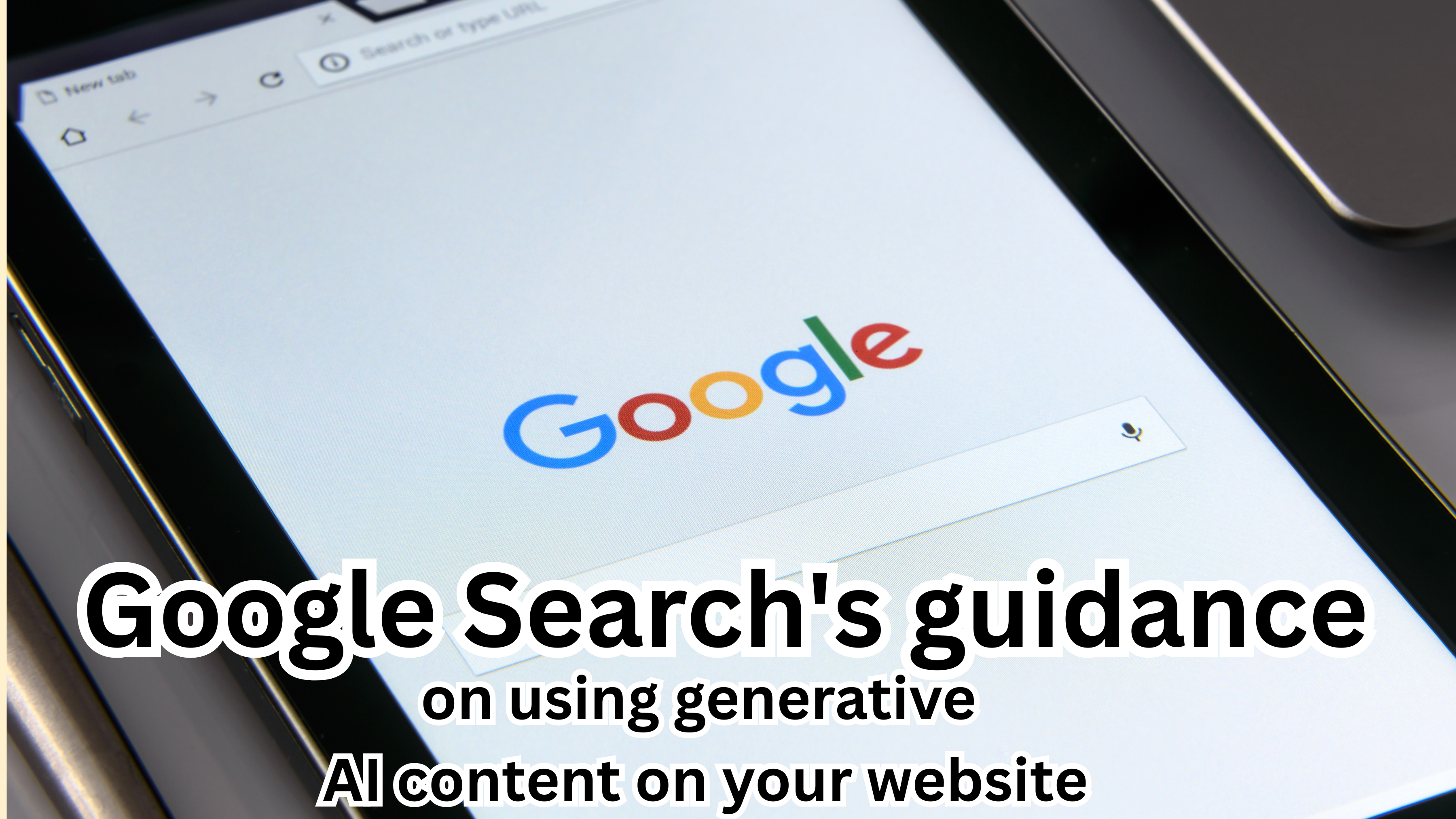Artificial Intelligence (AI) is changing the way people create content for the internet. One of the newest and most popular uses of AI is something called generative AI. These tools, like ChatGPT, Gemini, and Claude, can write articles, blog posts, and product descriptions quickly based on what you ask them.
This is exciting for many website owners and writers because it saves time. But if you want your website to show up on Google Search, you need to follow certain rules. Google has given advice on how to use AI-generated content the right way so that it is helpful to users and doesn’t break any rules.
In this article, you’ll learn what Google says about using AI to create content, what to avoid, and how to make sure your site still ranks well in search results.
What Is Generative AI and How Is It Used?
Generative AI is a type of technology that creates text, images, or other media after receiving instructions from a user. For example, if you tell it, “Write a blog post about healthy eating,” it can create a full article in seconds.
This is helpful for:
- Coming up with ideas
- Writing drafts
- Summarizing information
But there’s a catch. Some people use AI to make hundreds of web pages just to try and get more traffic or make money from ads. These pages often have little value and don’t help the reader. Google doesn’t like that and may remove these pages from its search results.
What Google Thinks About AI-Generated Content
Google says that using AI to help with writing is not bad. But there’s a problem when people use it to create lots of low-quality pages just to trick the search system. That breaks Google’s spam rules, especially the one called scaled content abuse.
Google explains:
“Using generative AI tools or similar tools to generate many pages without adding value for users may violate our spam policy.”
In simple terms: if you use AI to create lots of pages that don’t really help anyone or repeat the same thing, Google might see that as spam.
What Is Scaled Content Abuse?
Scaled content abuse is when someone creates too many pages too quickly using AI or other tools, and those pages are all similar, low-quality, or meaningless. The goal is usually to get high rankings in search results, not to help real readers.
Google gives more details in its Search Quality Rater Guidelines, which are used by people who test how good the search results are.
Two important sections are:
- Section 4.6.5: Looks at websites with many pages that are almost the same.
- Section 4.6.6: Talks about content that looks like it took no effort to make and doesn’t offer anything new or helpful.
Even if a human writes the content, if it’s boring, copied, or useless, it won’t do well on Google.
How to Use AI the Right Way
If you want to use AI to help with your content but also want to follow Google’s rules, here are the best things to do:
1. Focus on Helping the Reader
Before writing a blog post or web page with AI, ask yourself:
- Is this helpful to the reader?
- Is this content different from what’s already out there?
- Does it explain something clearly or offer new information?
If the answer is no, then you might want to improve it or not publish it at all.
2. Always Check and Edit AI Content
AI tools can make mistakes. They might give wrong information or write in a way that doesn’t match your style. That’s why it’s important to:
- Read everything the AI writes
- Fix errors or confusing parts
- Make sure the content fits your website and audience
AI should help you, not replace you.
3. Be Honest About How the Content Was Made
Google says it’s a good idea to explain how your content was created. If you used AI, you can mention it in a short note. This is especially useful if the topic is serious or sensitive, like health, money, or education.
You can also add technical details called metadata to your images or content. This helps Google understand that AI was used, and it builds trust with your readers.
Make Sure Your Website Follows SEO Rules
SEO means Search Engine Optimization—the steps you take to make your website easier to find on Google. Even if you use AI to write your content, you still need to follow SEO basics. Google recommends paying attention to the following:
1. Page Titles and Descriptions
Each page on your website should have:
- A clear title using the
<title>tag - A short and interesting summary in the meta description
These are the first things people see in Google search results. Make sure they are different for each page and match the topic.
2. Structured Data
Structured data is a special way of adding information to your web pages so Google can understand them better. For example:
- If you’re writing a recipe, use the “recipe” tag.
- If you’re answering questions, use the “FAQ” tag.
Google might show your content in special search boxes if you do this right. You can test your pages using the Rich Results Test.
3. Image Tags and Metadata
If you add pictures to your website, always include:
- Alt text: a short description of the image
- Metadata: hidden data that says if the image was made by AI
If you’re using AI-generated images, they must include a tag called:DigitalSourceType: TrainedAlgorithmicMedia
This is especially important for online shops or businesses that submit products to Google Merchant Center.
Extra Rules for Online Stores
If you run an e-commerce site, and you’re using AI to write product names or create product images, be careful.
Google’s Merchant Center has rules that say:
- You must label AI-created images clearly using the right metadata.
- AI-written product descriptions and titles must be labeled as such.
- Everything you list must be accurate and not misleading.
If you break these rules, your products might not appear in search results or in Google Shopping.
Use Google’s Quality Guidelines to Check Your Work
Google has a long document called the Search Quality Rater Guidelines. This guide helps human testers judge the quality of content.
Two parts of the guide are useful if you’re using AI:
- Section 4.6.5 explains how to spot websites with too many similar or copied pages.
- Section 4.6.6 gives examples of content that was made with no effort, creativity, or originality.
These examples help you understand what to avoid and what kind of content Google values.
Final Thoughts: Balance AI with Human Touch
Google is not against AI. In fact, it knows that many people use AI to save time and write better. But Google does care about the quality of the content.
The key is to use AI as a helper, not as the only writer. Good content takes time, thought, and care—even if AI is part of the process. Every piece of content should be useful, clear, and made with effort.
To sum up:
- Don’t publish hundreds of AI-written articles without checking them.
- Make sure your content is accurate, helpful, and original.
- Follow Google’s rules for SEO and be honest about how your content was made.
If you do all of this, your website can grow safely and successfully, even with AI by your side.


